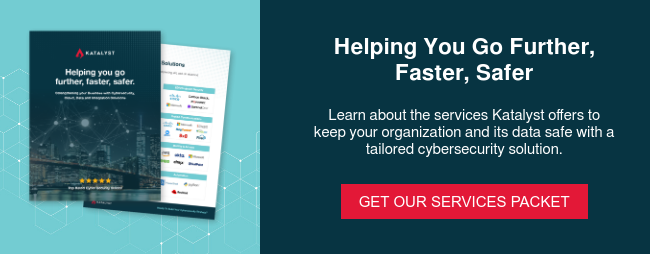Cyber crime is growing exponentially, and it’s becoming more expensive for businesses. As cyber threats evolve, what used to be a good security control – a strong password – is no longer enough.
What is SMS 2FA?
Is SMS 2FA Secure?
Is SMS 2FA Better Than Nothing?
2FA Best Practices — What We Recommend to Clients
Integrate your MFA platform with a Single Sign-On solution
This is a crucial step in streamlining the authentication process. Single Sign-On (SSO) solutions allow users to authenticate once and gain access to all systems without needing to log in again. This not only improves user experience but also reduces the risk of password fatigue, which can lead to insecure practices like password reuse.
Encourage users towards using a mobile app as a 2FA method
Mobile apps that support push notifications are generally more secure than SMS. These apps generate codes offline, reducing the risk of interception. Think of it like a secret handshake versus a loud announcement; the former is much harder for eavesdroppers to catch.
Be prepared to supply users with a secure 2FA method, such as a hardware token or USB security key
For those resistant to installing an app on their phone, hardware tokens or USB security keys provide a secure alternative. These physical devices generate a code that users can input for authentication, acting as a digital version of a physical key.
Prioritize 2FA for external services and privileged access
If you're just starting out with 2FA, focus on implementing it for external services such as email and Remote Access VPN first. Next, prioritize 2FA for privileged access to various applications. This approach is like fortifying the doors and windows of your house before worrying about the locks on your interior doors.
Prepare for the future by positioning your organization to disable SMS 2FA
While SMS 2FA is better than no 2FA, it's the weakest 2FA method. As cyber threats evolve, it's important to stay one step ahead. By nudging users towards more secure 2FA methods now, you can smoothly transition away from SMS 2FA in the future, without disrupting operations.
Perform security assessments on specific applications
Regular security assessments can help identify potential gaps where bad actors could bypass 2FA. This is akin to a regular health check-up; it helps you catch potential issues early before they become major problems.
However, the journey towards robust cybersecurity doesn't end with the implementation of 2FA. It's a continuous process that requires vigilance, adaptation, and a commitment to staying one step ahead of evolving threats.
At Katalyst, we're here to guide your organization on this journey. We offer consulting services and professional service implementations to enhance access security.
Our approach is centered on promoting secure 2FA methods and providing users with the necessary tools for a seamless transition. This includes training for IT staff and end-user help desks, ensuring they're equipped to support the workforce in this critical cybersecurity endeavor.
Learn more about our Security Analysis & Roadmap in this video.




